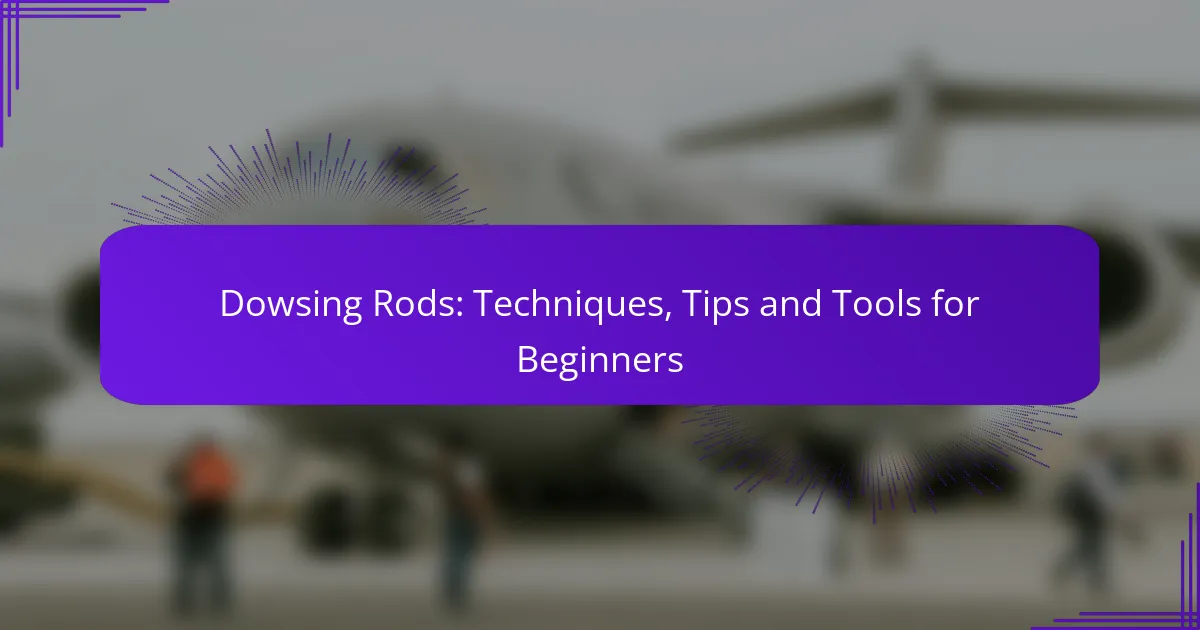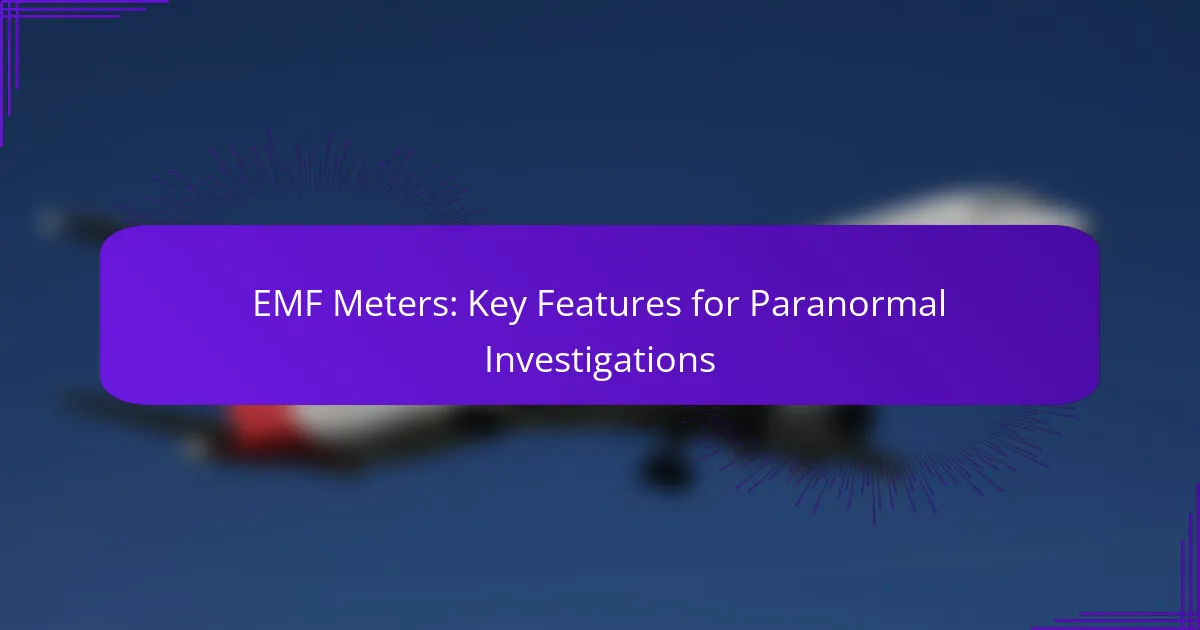Dowsing rods are a fascinating tool for locating water and other resources, and beginners can easily get started with simple techniques and tools. By using Y-shaped or L-shaped rods, newcomers can experience immediate feedback while learning to interpret the movements of the rods. Staying calm and open-minded is essential, as it allows for a more intuitive connection to the energies around you.

How to use dowsing rods effectively?
To use dowsing rods effectively, hold them with a relaxed grip and allow them to respond naturally to the energies around you. The key is to remain calm and open-minded while observing the movements of the rods as you search for water or other resources.
Basic holding techniques
When holding dowsing rods, grip them lightly with your thumbs and index fingers, allowing the rods to pivot freely. Position the rods parallel to each other, extending them in front of you at about waist height. This stance helps maintain balance and control while dowsing.
Ensure your arms are relaxed and slightly bent at the elbows. Tension can interfere with the rods’ movement, so practice holding them in a comfortable position that allows for fluid motion.
Movement patterns
As you walk slowly in the area you are dowsing, keep your focus on the rods. Move in a straight line or in a gentle zigzag pattern to cover the ground effectively. Pay attention to any changes in the rods’ position, as they may indicate the presence of water or other resources.
It’s helpful to maintain a steady pace, as rapid movements can disrupt the rods’ sensitivity. If you notice the rods crossing or diverging, take a moment to observe and interpret these signals before continuing.
Interpreting responses
Interpreting the responses of dowsing rods involves understanding their movements. If the rods cross, it often signifies a potential source of water or energy. Conversely, if they move apart, it may indicate an absence of resources.
Practice is essential for honing your interpretation skills. Keep a journal to note the locations and conditions when you receive specific responses, which can help you recognize patterns over time. Stay patient and open to learning from each experience.

What tools are best for beginners?
For beginners in dowsing, simple tools like Y-shaped rods or L-shaped metal rods are ideal. These tools are easy to handle and provide immediate feedback, making them suitable for those just starting their dowsing journey.
Types of dowsing rods
There are several types of dowsing rods available, each serving different purposes. Y-shaped rods, often made from wood or metal, are popular for locating water sources. L-shaped rods, typically crafted from metal, are used for finding minerals or lost objects.
Some dowsers prefer using pendulums, which can provide more detailed responses based on the direction and movement. Each type has its unique advantages, so experimenting with different rods can help you find what works best for you.
Recommended brands
When selecting dowsing rods, consider brands known for quality and reliability. Some popular options include the “Dowsing Rods by Dowsing Tools” and “The Dowsing Rod Company,” both of which offer a variety of styles suitable for beginners.
Look for rods that come with user reviews and recommendations, as these can provide insights into their effectiveness and durability. Investing in a reputable brand can enhance your dowsing experience and increase your confidence.
DIY options
Creating your own dowsing rods can be a fun and cost-effective way to start. You can easily make Y-shaped rods from sturdy branches or coat hangers, while L-shaped rods can be fashioned from metal wire or even sturdy plastic straws.
Ensure that your DIY rods are balanced and comfortable to hold. Personalizing your tools can also enhance your connection to the dowsing process, making it a more engaging experience.

What techniques enhance dowsing accuracy?
Several techniques can significantly improve the accuracy of dowsing, including grounding practices, visualization methods, and environmental considerations. By incorporating these strategies, beginners can enhance their sensitivity to subtle energies and improve their overall success in locating water or other resources.
Grounding practices
Grounding practices help dowsers connect with the Earth’s energy, which can enhance their sensitivity and focus. Techniques such as standing barefoot on natural surfaces, like grass or soil, can facilitate this connection. Additionally, deep breathing exercises and meditation can help calm the mind, allowing for clearer intuition during the dowsing process.
Consider performing grounding exercises before starting a dowsing session. Simple practices like visualizing roots extending from your feet into the ground can help establish a strong connection. Avoid distractions and aim for a quiet environment to maximize the effectiveness of these techniques.
Visualization methods
Visualization methods involve creating mental images that guide the dowsing process. For instance, imagining a flowing stream or a specific target can help focus your intentions. This clarity can lead to more accurate readings as your mind aligns with the energy you seek to detect.
To implement visualization, take a moment before dowsing to clearly define your goal. Picture the desired outcome vividly, whether it’s locating water or another resource. Practicing this technique regularly can strengthen your ability to visualize and enhance your dowsing accuracy.
Environmental considerations
Environmental considerations play a crucial role in dowsing accuracy. Factors such as weather conditions, nearby electromagnetic fields, and the type of terrain can influence the effectiveness of your dowsing efforts. For example, dowsing may be more successful in open areas compared to urban environments filled with electronic interference.
When selecting a dowsing location, choose areas with minimal disturbances, such as remote fields or forests. Be mindful of the time of day as well; early morning or late afternoon often provides calmer conditions. Avoid dowsing during storms or high winds, as these can disrupt your focus and the energy you are trying to connect with.

What common mistakes should beginners avoid?
Beginners in dowsing should be aware of several common mistakes that can hinder their effectiveness. Avoiding these pitfalls can enhance your experience and improve your results.
Overthinking movements
One major mistake is overthinking the movements of the dowsing rods. Beginners often try to control the rods too much, leading to tension and inaccurate readings. Instead, allow the rods to move naturally, responding to the energy around you.
To avoid overthinking, practice holding the rods lightly and focus on your surroundings rather than the tools themselves. This relaxed approach can help you tune into the subtle signals that guide the rods.
Ignoring intuition
Another common error is ignoring your intuition while dowsing. Many beginners rely solely on the physical movement of the rods and overlook their gut feelings or instincts. Trusting your intuition can provide valuable insights that enhance your dowsing experience.
To cultivate this skill, take time to reflect on your feelings during a session. Consider keeping a journal to note your intuitive thoughts and how they correlate with the rod movements. This practice can help strengthen your connection to your inner guidance.
Practicing in noisy environments
Practicing dowsing in noisy environments can significantly affect your ability to focus and interpret the signals from the rods. Distractions from sounds or movement can lead to confusion and misinterpretation of the readings. Choose a quiet, calm location for your practice sessions.
When selecting a site, look for areas with minimal background noise, such as a quiet park or a secluded room. This will allow you to concentrate better and improve your sensitivity to the energy fields you are trying to detect.

How to choose the right location for dowsing?
Choosing the right location for dowsing is crucial for success. Look for areas with natural energy sources, such as water veins or mineral deposits, as these can enhance your ability to detect signals.
Ideal outdoor settings
Outdoor dowsing is best conducted in open spaces away from urban interference. Look for fields, forests, or hills where natural elements can be more easily sensed. Areas near rivers, lakes, or springs are particularly favorable since they often have underground water sources.
When selecting an outdoor site, consider the time of day and weather conditions. Early mornings or late afternoons can provide optimal energy levels, while calm, clear days may enhance your dowsing experience.
Indoor dowsing tips
Indoors, choose quiet spaces free from electronic distractions. Rooms with natural light and good ventilation can create a more conducive environment for dowsing. Avoid cluttered areas, as they can interfere with your focus and the energy flow.
To enhance indoor dowsing, consider using crystals or other natural elements to amplify energy. Placing these items in your dowsing area may help you tune into the signals more effectively.
Local energy hotspots
Local energy hotspots are areas known for heightened natural energy, such as sacred sites, ancient ruins, or specific geological formations. Research local lore or consult with experienced dowsers to identify these locations in your area.
Visiting these hotspots can significantly improve your dowsing results. Many practitioners report stronger reactions from their rods or pendulums in these energized environments. Always approach these sites with respect and awareness of local customs.

What are the historical uses of dowsing rods?
Dowsing rods, often referred to as divining rods, have been used for centuries to locate water, minerals, and other hidden objects. Historically, practitioners believed these tools could tap into natural energies or vibrations to guide them in their search.
Water Dowsing
Water dowsing is the most common historical use of dowsing rods, where individuals sought underground water sources. Practitioners would walk over a suspected area while holding the rods, which would allegedly move or cross when they were above water. This method was particularly popular in rural areas, where access to clean water was essential.
Mineral Exploration
In addition to locating water, dowsing rods have been historically employed in the search for minerals and metals. Miners and prospectors used these tools to identify potential sites for excavation. While some claimed success, scientific validation of these practices remains limited.
Spiritual and Healing Practices
Dowsing rods have also found a place in spiritual and healing practices. Some practitioners use them to identify energy fields or to locate areas of spiritual significance. This aspect of dowsing emphasizes intuition and personal connection, often leading to varied interpretations of results.



